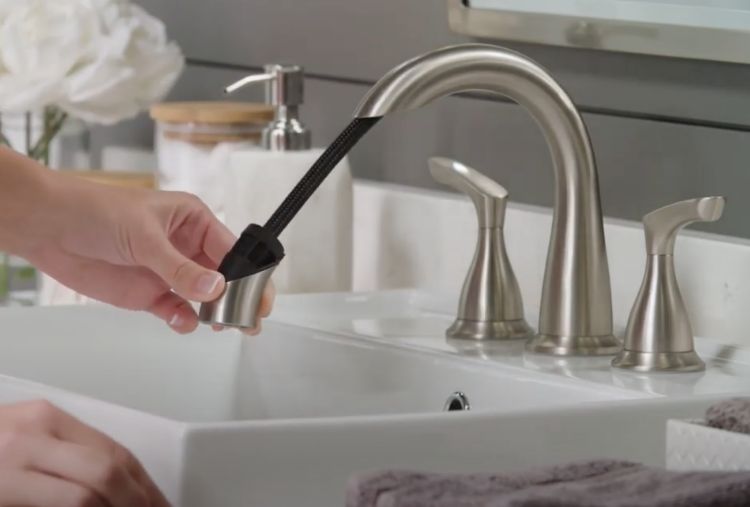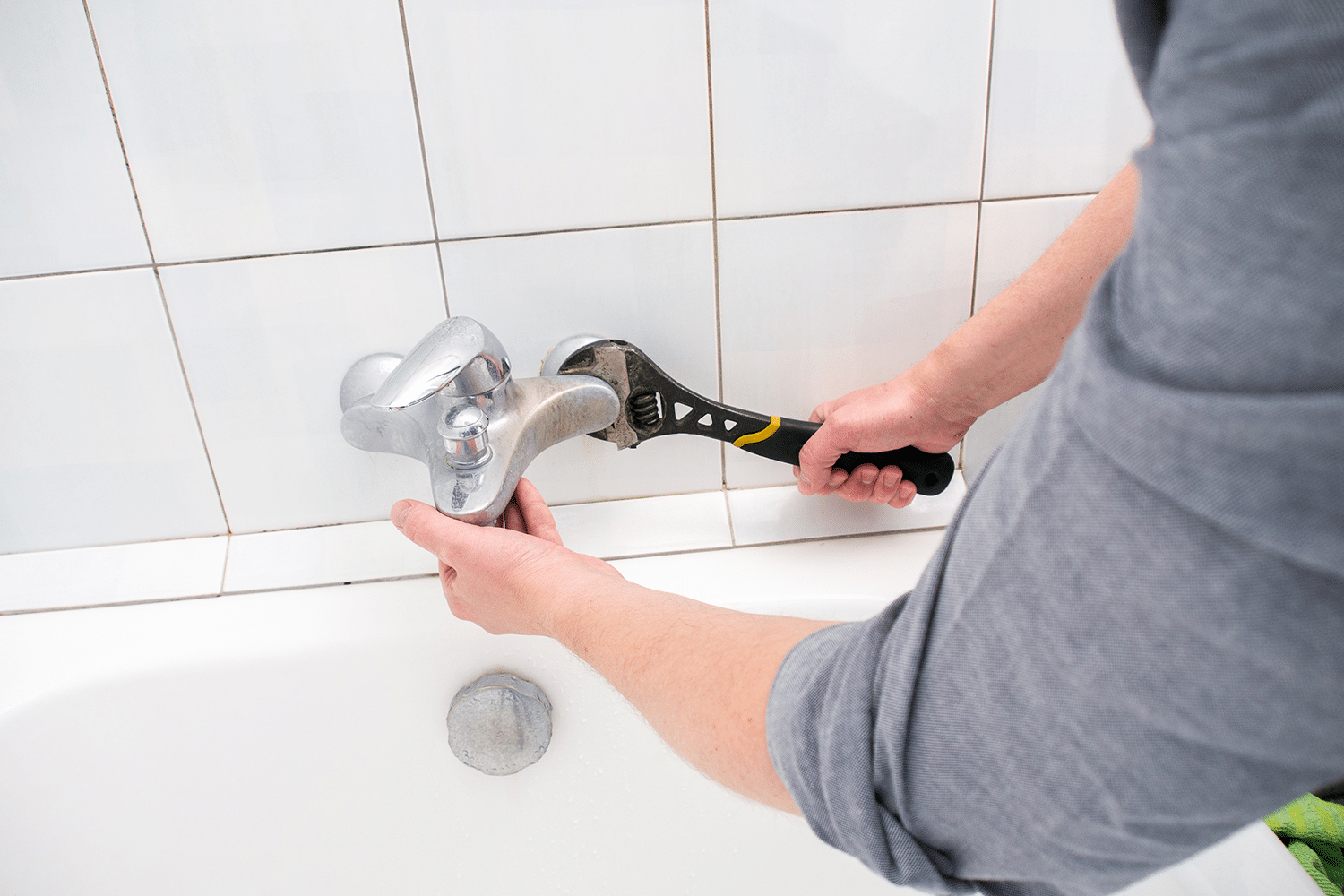When It's Important to Rectify a Malfunctioning Faucet
When It's Important to Rectify a Malfunctioning Faucet
Blog Article
Each person seems to have their unique conception on the subject of Should I Repair or Replace a Leaky Faucet?.

Leaking faucets may feel like a small aggravation, yet their influence exceeds just the inconvenience of the sound. From wasting water to sustaining unneeded monetary costs and health and wellness dangers, ignoring a trickling tap can result in numerous repercussions. In this short article, we'll look into why it's vital to address this usual home problem promptly and properly.
Wastage of Water
Ecological Impact
Leaking taps contribute considerably to water wastage. According to the Environmental Protection Agency (EPA), a solitary tap leaking at one drip per second can throw away greater than 3,000 gallons of water annually. This not only pressures water sources but additionally influences environments and wildlife depending on them.
Financial Expenses
Increased Water Expenses
Beyond the environmental influence, dripping taps can inflate water costs significantly. The gathered waste with time equates into higher utility expenditures, which can have been stayed clear of with prompt repair services.
Prospective Property Damage
Furthermore, prolonged leaking can cause harm to components and surfaces bordering the faucet. Water build-up can create staining, rust, and also architectural issues if left neglected, resulting in additional repair costs.
Wellness Concerns
Mold and Mildew Growth
The consistent visibility of wetness from a dripping faucet produces an optimal environment for mold and mold development. These fungi not just compromise interior air top quality however additionally present wellness risks, particularly for people with breathing conditions or allergic reactions.
Waterborne Conditions
Stagnant water in dripping faucets can become a breeding ground for bacteria and other virus, boosting the danger of waterborne illness. Pollutants such as Legionella microorganisms prosper in stagnant water, possibly resulting in major illnesses when consumed or inhaled.
Do it yourself vs. Specialist Repair
Benefits and drawbacks of DIY Repair Service
While some may try to fix a trickling tap themselves, DIY repairs include their very own set of challenges. Without appropriate knowledge and tools, do it yourself attempts can aggravate the problem or bring about incomplete repairs, lengthening the problem.
Advantages of Hiring a Specialist Plumber
Employing an expert plumber makes sure that the underlying source of the leaking faucet is resolved effectively. Plumbing professionals have the knowledge and equipment to identify and fix tap issues successfully, conserving time and lessening the threat of more damage.
Step-by-Step Overview to Dealing With a Dripping Tap
Tools Called for
Prior to attempting to repair a trickling tap, collect the essential devices, including a flexible wrench, screwdrivers, replacement components (such as washers or cartridges), and plumber's tape.
Common Tap Issues and Their Solutions
Recognize the kind of tap and the specific problem causing the drip. Typical troubles include worn-out washing machines, rusty valve seats, or malfunctioning O-rings. Describe producer directions or on-line tutorials for step-by-step support on repairs.
Preventive Measures
Routine Upkeep Tips
To stop trickling taps, perform routine maintenance such as cleaning up aerators, checking for leakages, and changing damaged components without delay. Additionally, consider installing water-saving devices or updating to extra reliable components.
Value of Prompt Fixes
Attending to leaking faucets as soon as they're discovered prevents more water wastefulness and prospective damage, inevitably conserving both water and money in the future.
Influence On Property Worth
Assumption of Well-Maintained Residential Property
Preserving a property in good condition, consisting of addressing upkeep issues like leaking faucets, improves its regarded value and worth among prospective customers or renters.
Impact on Resale Worth
Qualities with well-kept plumbing components, consisting of faucets, command higher resale worths in the property market. Resolving dripping taps can add to a favorable impact during property inspections and arrangements.
Ecological Responsibility
Specific Payment to Conservation
Taking duty for dealing with leaking faucets straightens with wider initiatives toward water conservation and ecological sustainability. Every individual's activities collectively make a substantial influence on maintaining valuable sources.
Lasting Living Practices
By focusing on timely repair work and embracing water-saving routines, individuals contribute to sustainable living techniques that profit both present and future generations.
Conclusion
Attending to a trickling tap surpasses plain convenience; it's a crucial step towards preserving water, lowering monetary prices, and securing health and wellness and property. Whether through DIY repair work or professional assistance, taking action to fix trickling taps is a small yet impactful way to advertise accountable stewardship of resources and contribute to a much healthier, a lot more sustainable future.
How to Fix a Dripping or Leaky Faucet
A leaking faucet is one of the most common problems that homeowners encounter, but it being commonplace doesn’t make it any less annoying. The constant drip drip drip of a leaking bathtub faucet, showerhead, or sink tap can disturb your home’s serenity. Left neglected, a dripping faucet can also result in higher water bills and discoloration or mold growth in your sink or plumbing fixtures.
Fortunately, you don’t have to be a trained plumber to know how to stop a dripping faucet. With some basic tools, replacement parts, and a little patience, leaky faucet repair is a breeze. In this article, we’ll explain what causes dripping faucets and how you can fix them.
What Causes a Leaking Faucet?
Kitchen and bathroom faucets come in all manner of designs, but most involve some combination of valves, O-rings, seals, and washers. The O-ring is usually the weakest link, but any one of these pieces can wear down over time. Heat, moisture, temperature fluctuations, minerals, mold, and movement can contribute to warping and corrosion, breaking the watertight seal. This just comes with the territory of being a homeowner. Everything is always subject to wear and tear, and some component parts of your appliances and fixtures need to be replaced on occasion. At least replacement O-rings are cheap!
More rarely, dripping faucets can be a symptom of excessively high water pressure. Were this the case in your home, you would probably notice that the leak is not isolated to one faucet. Water pressure issues are harder to resolve on your own. We recommend contacting a professional plumber if you suspect your water pressure is too high.
How to Fix a Dripping Faucet
Pipe wrench or monkey wrench Allen wrench set Screwdrivers Old towel or rag Shut off the water.
Before you do anything, you need to turn off the water to keep from drenching your kitchen or bathroom. You should find a valve under the sink and against the wall. Once you’ve turned this valve, try turning the faucet on to confirm that the water source has been cut off.
If you can’t locate your local valve for the faucet you’re working on, you can always shut off the water to the house at the main valve. Of course, this will prohibit anyone from using the sinks, showers, or toilets while you’re working on the faucet that’s giving you trouble.
Plug or block the drain.
You’ll be disassembling the faucet and removing some small bits of hardware. Plug the drain with a stopper or rag to avoid the possibility of a small screw falling into your P-trap.
Take apart the faucet assembly.
There are several varieties of kitchen and bathroom faucets, each with its own manner of assembly. For detailed instructions on how to disassemble your faucet, you can refer to the fixture’s manual or contact the manufacturer. If you know whether you have a ball, disc, cartridge, or compression faucet, you can find detailed schematics online.
In general, you need to begin by removing the faucet handles. You might notice a small screw that you’ll need to remove with a screwdriver or Allen wrench. If you don’t see any visible securing hardware, it’s likely hidden under a decorative cap that can be unscrewed or popped off with flathead screwdriver.
Remove each piece methodically, consulting a schematic when necessary. Take notes or arrange the pieces in such a way to make it easier to correctly reassemble the faucet later.
Remove the cartridge.
Once you’ve removed the handles and securing hardware, you should be able to remove the valve cartridge or stem. Some cartridges will slide right out. Other faucet models will require you to loosen a nut with a pipe wrench before you can remove the valve stem.
Examine the exposed hardware.
With the cartridge or stem removed, inspect the component parts. Check the rubber O-rings for wear and tear. Also examine the seat washer for corrosion or other damage. These pieces are usually the responsible parties for a dripping faucet, but it’s worth inspecting the other component parts while you have the faucet disassembled.
Find replacement parts.
Once you’ve identified which faucet component has failed, find an identical replacement. Your local hardware store should have O-rings, seat washers, and other standard components in stock. If you have a luxury or uncommon faucet, you may have to contact the manufacturer for a replacement part.
It’s a good idea to take your old parts with you to the hardware store so you can compare them with the store’s inventory and be sure you’re purchasing the correct replacement.
Reassemble the faucet.
With your new parts in hand, reconstruct the faucet and handles. Don’t be tempted to overtighten screws or nuts. You might think this could create a better seal, but it can instead damage or bend a delicate part of the assembly and create a new problem for you.
Turn on the water and test the faucet.
The only thing left to do is test your work. Unplug the sink, turn the water back on, and try the faucet. Congratulate yourself on a job well done!
https://www.libertyhomeguard.com/how-to-fix-a-dripping-or-leaky-faucet/

Hopefully you liked our topic about Why Are My Faucets Dripping (And Can I Fix It Myself)?. Thanks a lot for taking the time to read our content. So long as you appreciated our page if you please consider to pass it around. We cherish reading our article about Leaky Faucets: Why They Happen & What to Do About Them.
Report this page